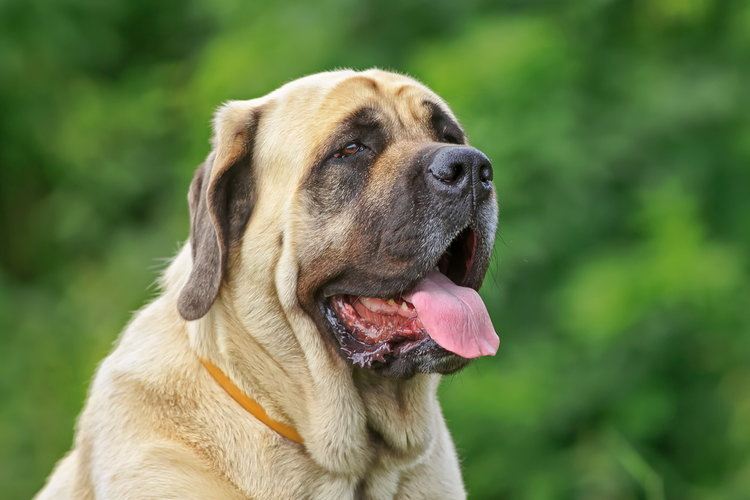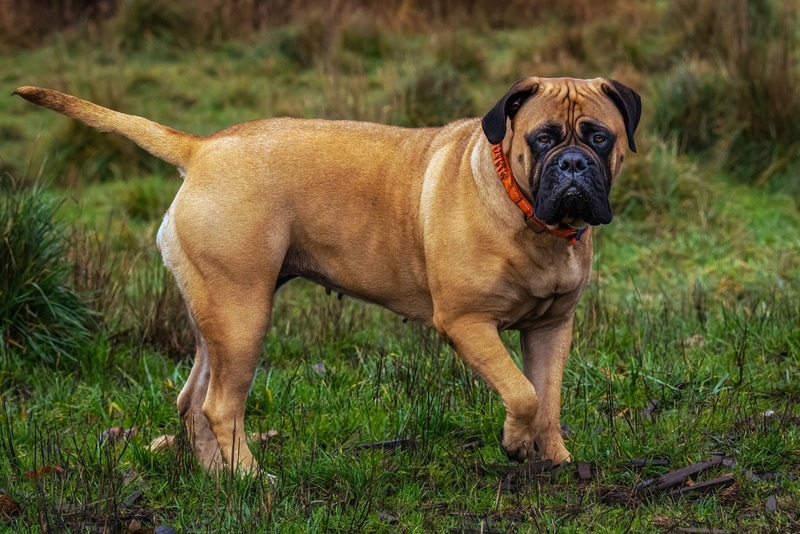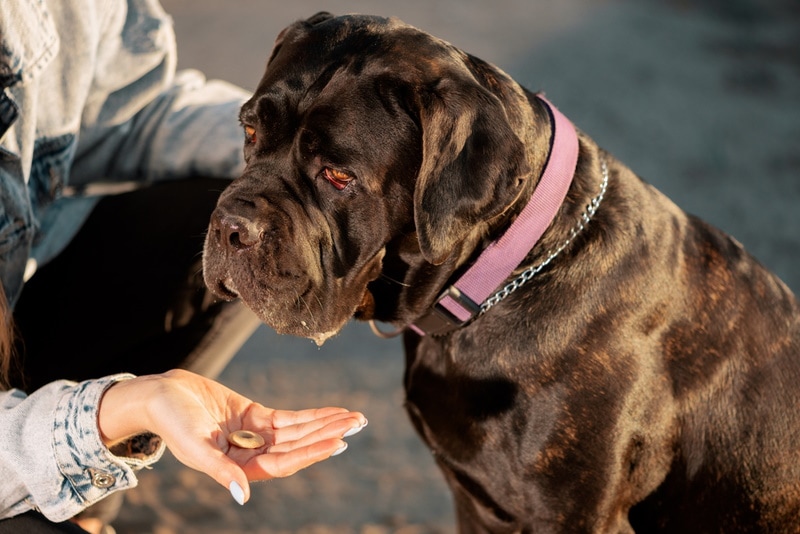Are Mastiffs Aggressive? Temperament & Personality Traits

Updated on

Mastiffs are some of the largest dog breeds in the world, featuring a kind, noble and loyal disposition. Unfortunately, this dog breed is shrouded in myths and misconceptions. They often receive a bad reputation as an overly aggressive dog breed due to their physical traits, low intelligence, and temperament.
However, Mastiffs are not overly aggressive. They are family protectors and gentle companions, making them suitable family pets. Granted, they may be polite, but some can be extremely shy, while some may display some aggression. To ensure that they have a stable temperament, they need frequent socialization from an early age.
In this article, we will discuss everything you need to know about Mastiffs to find out if it’s a dangerous dog breed and whether you should keep it as a pet.
Why Are Mastiff Dogs Considered Dangerous and Aggressive
English Mastiffs were initially bred for guarding purposes. They feature certain physical traits meant to accomplish their guarding role, but unfortunately, they are also the reason behind the negative reputation of Mastiffs.
Among the physical attributes that portray them as dangerous and aggressive include their gigantic body and some body parts that stand out.
Their weight and size vary depending on a specific gender. While the male Mastiff grows up to 30 inches and weighs between 160–230 pounds, the females can grow up to 27.5 inches weighing about 120–170 pounds.
Furthermore, Mastiffs tend to have an appealing posture and a very powerful chest. They also feature a large head, long and thin ears positioned too low on the head, and curved tails set moderately high on their backs. These features appear intimidating and can chase away any potential intruders into your property.

So, Are They Really Aggressive?
While many people may believe that Mastiffs are an aggressive breed, the most ideal description for this behavior is being protective. They may display aggression when protecting their owners or themselves. The only reason why Mastiffs may be overly aggressive is because of lack of socialization and poor training practices.
If a mastiff is raised in a home with abuse, neglect, maltreatment, or punishment, they are likely to develop fear-related aggression, and this behavior can be hard for the dog to unlearn.
Also, as watchdogs, Mastiffs can be too hostile and territorial towards other dogs, even with familiarization. This overprotective nature is usually developed at puppyhood. Nevertheless, modern-day Mastiff dogs are gentle and friendly, only showing aggression if the owner is threatened.
To determine if your Mastiff is getting aggressive, there are several signs that you can be on the lookout for.1 The sooner you notice aggression signs, the sooner you can address the issue. They include:
- Baring teeth
- Taking an offensive stance
- Making quick nips and bites
- Lunging towards a person
- Snapping
- Intense growling
Do They Make Good Pets?
Despite their reputation and misconceptions, Mastiffs can make excellent house pets. They are naturally sweet and loving dogs if well socialized from an early age. They can be shy, reserved and try as much as possible to keep away from strangers, but once they see that a person is not a threat, they will be calm and kind.
Therefore, if you are looking for a loyal and courageous dog to guard your property, the Mastiff may be the right choice for you.
Nevertheless, keep in mind that other dogs may not be able to live with Mastiffs due to their energy levels and huge size. Furthermore, if you have smaller pets and children in your home, Mastiffs may not be the right breed for you.

Tips to Keep Your Mastiff Safe and Happy
Owning a Mastiff is not for the faint-hearted. It is a huge commitment because you have to ensure that your dog is well fed so as to build a muscular and strong body. Take them out at least twice a day to tone their muscular bodies.
To ensure that your Mastiff does not adopt aggressive behavior, training from an early age is paramount. There are two approaches that you can take. These include dominance-based training and positive reinforcement. Whatever method you choose, it’s imperative that you teach your dog some boundaries. Failure to will lead to the dog adopting an aggressive temperament.
Also, raise it with love and care. This way, your Mastiff will still retain its aggressive appearance, but be gentle enough to make a worthwhile family pet.
Another thing to keep in mind about this dog breed is the fact that it is often targeted for “banning’’ in some areas. Mastiff owners are often denied insurance coverage because your friends and neighbors may be uncomfortable around this massive dog breed.2
Therefore, you should seriously consider the legal liabilities associated with owning a dog with a history of being a guard dog or any dog breed that may appear intimidating. Just ensure you have your dog in guard at all times to avoid any legal suites.

 Conclusion
Conclusion
Mastiffs are a dog breed shrouded in myths, one of the most popular ones being that they are an aggressive breed that can be dangerous to own. The assumption is reached because of their enormous size, strength, and low intelligence.
However, despite their threatening appearance, Mastiffs can make great family pets that live long and happy lives. They can only be aggressive when protecting themselves and their owners from imminent threats.
If you are a first-time dog owner, a Mastiff is a great choice, especially if looking for a guard dog. They are always protective and alert, which are some of the best traits you can have in a watchdog. Just make sure they get plenty of exercise and they are not left alone for lengthy periods.
Featured Image Credit: 947051, Pixabay










